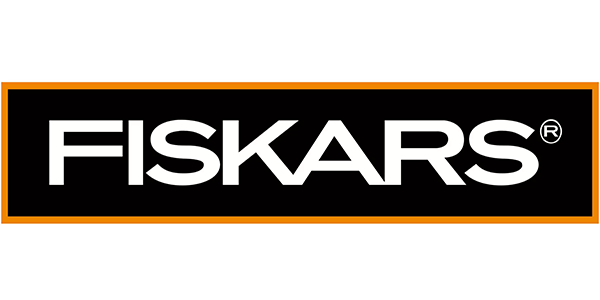So you've now mastered NZ's approximately 600 macro-moths* and wondering where to go next? The obvious answer, probably, is to venture into studying NZ's much larger and diverse micro-moth fauna. To the beginner this presents a significant challenge as NZ's micro-moths have traditionally been little studied, hence there is a paucity of reference material available to professional and amateur alike. However, trust me the rewards can be well worth the effort.
Stigmella hoheriae, photo Olly Ball
Micro-moths exhibit a fascinating diversity of form and habits as their generally smaller size allows them to exploit a wider range of habitat niches. While many are associated in some way with the higher plants, in NZ a considerable number are found in the most unexpected places such as ferns and mosses, algae and fungi, and on decaying plant or animal materials.
Many, especially when viewed under some form of magnification, are simply exquisite, exhibiting inexplicable marking and adorned in a range of metallic hues – resulting in the obvious question, why? I'll leave the reader to answer that one. Of course, there are also 'little brown jobs' which fit the public's perception of nuisance or pest moths, but these are also essential to the efficient functioning of ecosystems.
Macarostola miniella, photo Olly Ball
Micro-moth identification
As previously mentioned, while studying micro-moths can be a rewarding pastime, to the beginner it can seem quite daunting, not least due to the lack of modern and comprehensive identification field guides. Since Hudson's seminal publications: The Butterflies and Moths of New Zealand (1928, 1939), now inevitably out of date and definitely not a field guide, there has been little published on NZ's approximately 1200 micro-moth fauna. There are however a couple of on-line tools available on iNaturalist, which aim to provide the amateur some assistance with their identification.
When attempting to identify a particular micro-moth it is probably best to start at a higher taxonomic level, i.e. families, as they are defined by a range of characters. It should be noted that it may be impossible to identify on external characteristics alone. Features such as the resting position of the wings, antennae and body of a living adult may be sufficient to identify which family it belongs to. Labial palps, the moths’ mouthparts, are another distinguishing feature and easily observed with a hand lens or a low-powered microscope.
Recording micro-moths
Today many who study moths do not wish to kill or set moths and use the medium of photography to record their observations. The advent of on-line 'citizen science' biodiversity recording platforms such as iNaturalist has certainly transformed the hobby. Images can be uploaded via a freely available app and the observation identified, initially by accepting the iNaturalist provided suggestion, or more frequently and probably more accurately by community experts in the respective field. To be accepted as 'research quality' identification needs to be supported by two or more.
However, for the serious enthusiast who seeks to extend knowledge of NZ's micro-moth fauna, with the potential of discovering a new species, a reference collection is essential. As Dr Robert Hoare states “To gain a knowledge of the smaller moths there is currently little alternative to forming a reference collection and periodically taking specimens into a museum or reference collection to identify them”. It should be noted that a digital image is no substitute for a voucher specimen as you can't dissect a photograph!
Where to start looking?
Many of the techniques and equipment for studying our macro-fauna are applicable to our smaller micro-moths. However, the effectiveness of a particular method applied to micros may be noticeably different and therefore could impact on where you should direct your efforts for maximum benefit.
Light trapping: Many micro-moth families, e.g. Crambidae, Tortricidae and Pyralidae can be regularly attracted, sometimes in large numbers, to UV and other types of lamp. Other moth families are less inclined to do so: indeed some seem to avoid them altogether and must be sought out by other means. Micro-moths are also more likely to be damaged by larger and more active moths while residing in the trap, adding to the difficulty of their subsequent identification. However, be aware that caddisflies and other potential micro-moth 'impersonators' are likely to comprise a proportion of visitors and can be difficult to separate for the beginner.
By torchlight: Adult micro-moths will seek nectar on similar flower species as the larger moths, hence an examination of using a torch accompanied by a butterfly net should reward the intrepid hunter. Also, when walking through the bush keep your eyes open for micros quietly sat on vegetation and those that take off when accidentally disturbed.
Daylight hunting: A surprising number of micro-moths can be recorded during daylight hours. There are those specialists which are best sought out during the day and those usually active at night that can be 'swept' from their daytime roosting sites. Most micro-moths are not fast flying and do not fly far if disturbed so all that is required to secure the specimen is a good netting technique.
Pheromones: A number of artificial pheromone lures have been developed for monitoring and control of pest species, and in micro-moths for species in the Tortricidae and Pyralidae. However, other 'desirable' species are sometimes attracted.
Early stages: For some moth enthusiasts a real treat is in store if they elect to extend their identification skills in the search for larvae and rearing them on to adulthood. In NZ there are many species that have never been reared and their biology totally unknown. For some species, apart from employing dissection techniques, it's the only reliable method via plant association, for distinguishing a particular species from another.
*Micro-moths make up around 64% of NZ's fauna. While there are about 680 macro-moths the key difference between the two groups lies in their evolutionary history and the families they belong to. Micro-moths mainly represent earlier evolved families.











